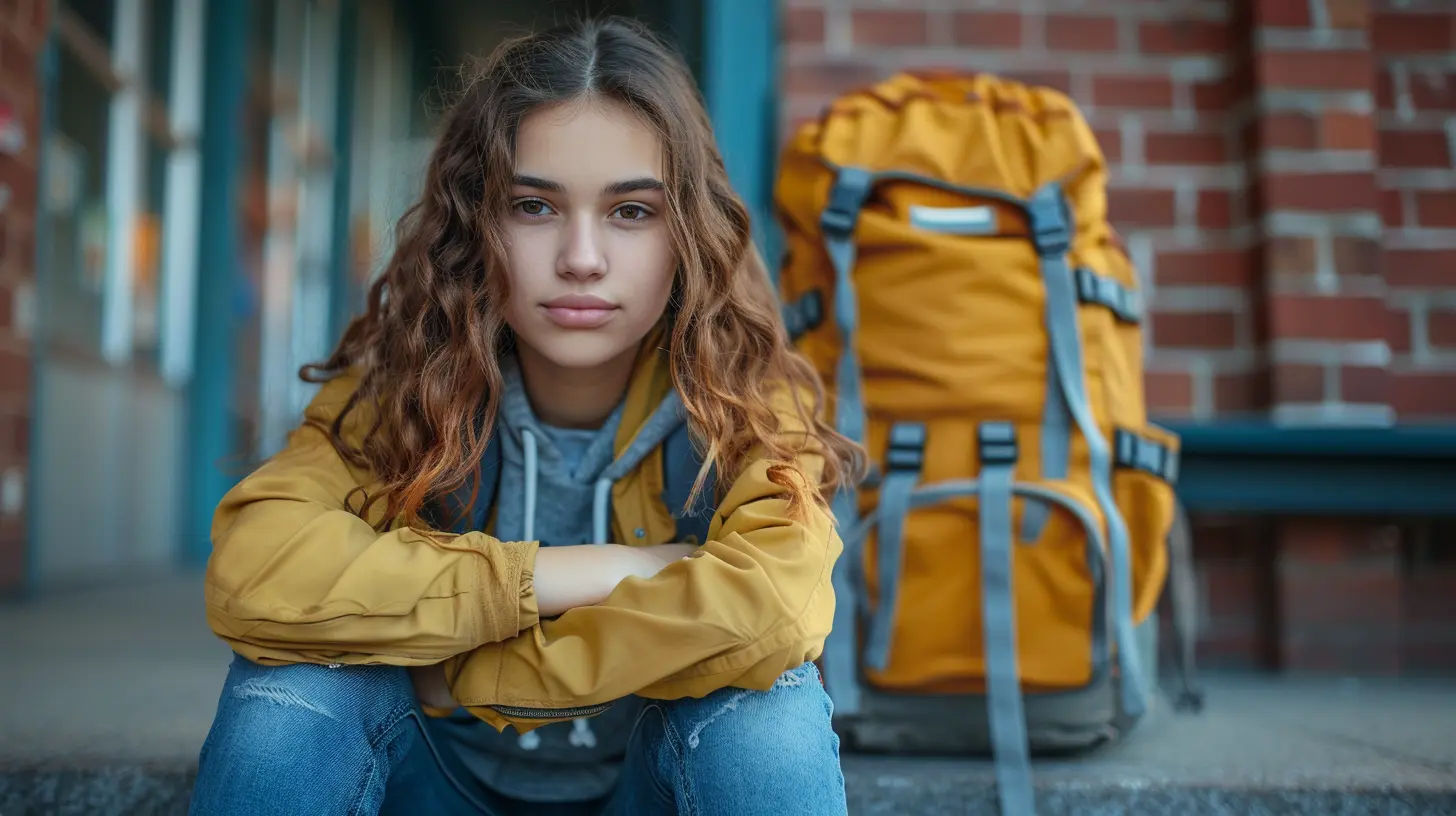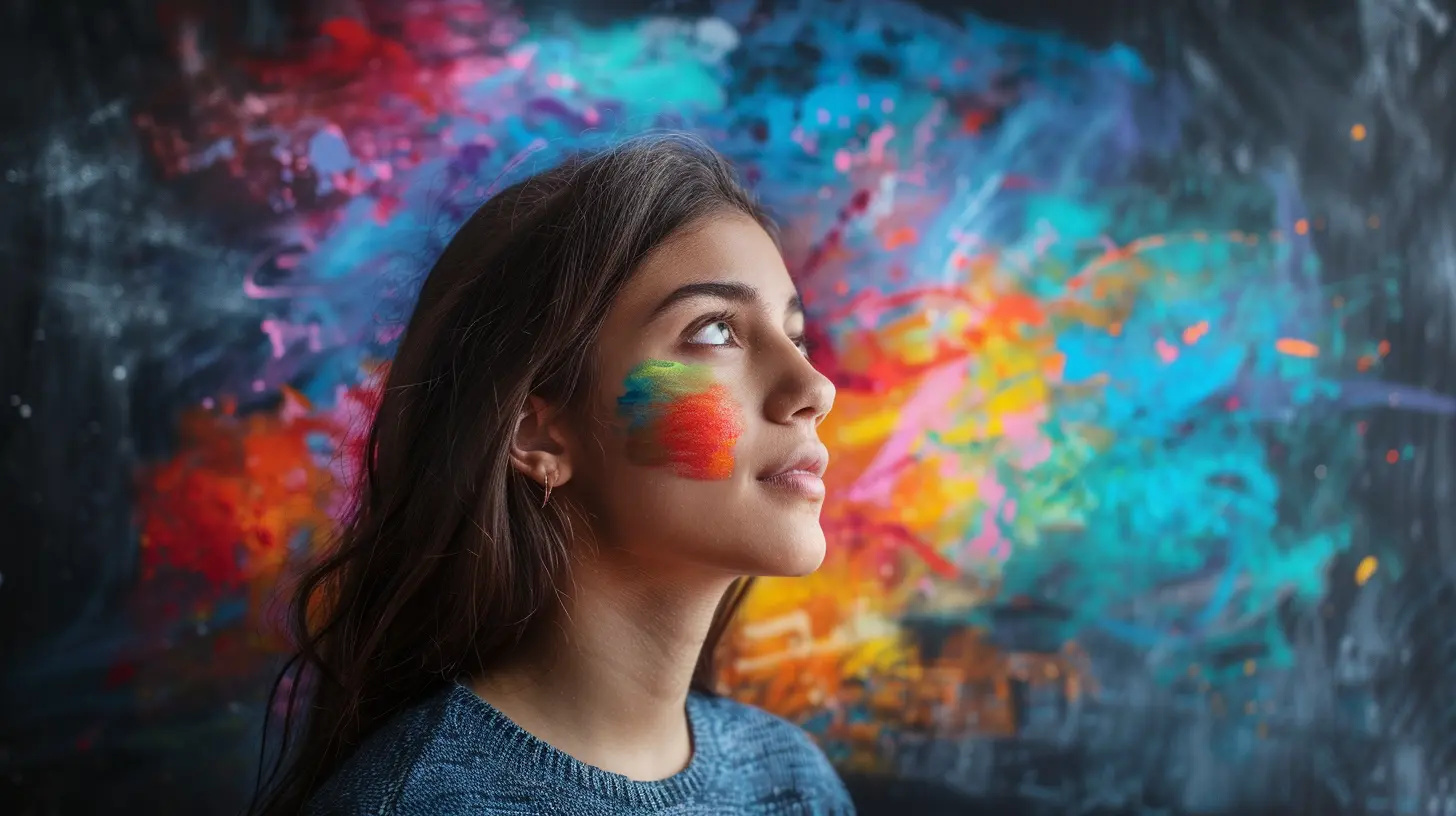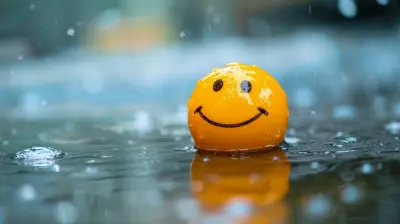How to Build Mental Health Awareness in High Schools
25 October 2025
Mental health. Two small words, but they carry a massive impact—especially in the lives of high school students. Let’s be real: the teenage years are tricky enough on their own. Mix in pressure from school, social media comparisons, family expectations, and future fears, and you’ve got a potential mental health storm brewing.
So, how do we help? How do we truly make a dent and build genuine mental health awareness in high schools—in a way that reaches students, speaks their language, and makes them feel seen and heard? If you’re curious (and you should be), keep reading. We’re about to unpack this topic in a way that’s practical, heartfelt, and more than just textbook talk.

Why Mental Health Awareness in High Schools Matters
Before we jump into the how, let’s talk about the why.High school isn't just about grades and graduation gowns—it's about growing up. Teens are navigating identity, relationships, emotions, and expectations all at once. That’s a lot to carry for someone with an unfinished brain.
Let’s throw in the statistics for a reality check:
- According to the CDC, more than 1 in 3 high school students reported persistent feelings of sadness or hopelessness.
- Suicide is one of the leading causes of death among 15- to 19-year-olds.
Yikes, right?
But here's the flip side—mental health awareness can absolutely change the game. By raising awareness, we reduce stigma, encourage early intervention, and most importantly, give students the tools they need to thrive, not just survive.

Spotting the Signs: What Mental Health Challenges Look Like in Teens
Let’s bust a myth: mental health issues don’t always look like someone crying in a corner. Sometimes they look like the class clown, the overachiever, the quiet student who “just likes to be alone.”Here are a few red flags that could signal a teen is struggling:
- Sudden drop in academic performance
- Overwhelming anxiety before tests or social events
- Drastic changes in appearance or sleep patterns
- Withdrawal from friends or activities they once loved
- Expressions of hopelessness, worthlessness, or self-harm
And get this—sometimes even teachers and parents miss these signs. That’s why creating awareness in schools is so crucial. We need an environment where it’s okay to talk about not being okay.

Building a Culture of Mental Health Awareness in Schools
So, how do we go from occasional assemblies to a school culture that genuinely understands and supports mental health?Let’s break it down.
1. Start with Real Talk in the Classroom
Mental health education shouldn’t be a one-time event during Mental Health Awareness Month. It should be baked into the curriculum. Not just the health class, but history, literature, even biology.Let students read books about mental health, write essays reflecting their own experiences, or analyze historical figures who dealt with mental illness. Normalize the conversation.
What if every student knew how to identify anxiety or depression the same way they know the Pythagorean theorem? Now that’s education that sticks.
2. Train Teachers to Recognize and Respond
Teachers are on the front lines. They know when a kid is “off,” but many don’t know what to do next.Providing mental health training to educators can make a world of difference. And no, it doesn’t mean turning teachers into therapists—but equipping them with the tools to:
- Recognize troubling behavior
- Know how to approach students with compassion
- Refer them to the right support channels
It’s like giving them a mental health first-aid kit.
3. Create Safe Spaces
Every school should have at least one safe, quiet room where students can recalibrate—a mental reset zone, if you will.Imagine this: a cozy space with bean bags, calming lighting, stress-relief tools, and maybe some gentle background music. Students could visit when they feel overwhelmed, anxious, or just need a mental breather.
This tiny change could prevent major breakdowns.
4. Peer Support Programs
Let’s face it—most teens would rather talk to their friends than an adult. That’s why peer support programs are gold.Train a group of students to serve as peer listeners. These aren’t replacements for counselors, but they’re a first line of emotional support and can encourage others to seek help if needed.
Plus, it fosters empathy and leadership among students.
5. Normalize Counseling and Therapy
Here’s something radical: counseling shouldn’t be viewed as a last resort. It should be seen as a normal, healthy part of school life—like going to the nurse when you have a stomachache.Bring in school counselors, psychologists, or even invite guest therapists to host Q&A sessions. Make it chill, like a conversation—not a lecture.
Also, drop the cloak of secrecy. Let students know where the counselor's office is, what kind of support they can get, and how to make an appointment—without needing to hit rock bottom first.
6. Engage Parents and Guardians
Parents are a huge piece of the puzzle. But they can’t help if they don’t know what’s going on, or worse, if they don’t believe mental health is “real.”Host family-centered workshops or webinars that explain mental health issues in plain language. Create newsletters, offer resources, and invite them to be part of the conversation.
When home and school are on the same page, students win.
7. Use Social Media for Good
Instead of fighting social media, why not use it as a tool for awareness?Schools can create Instagram or TikTok accounts centered on mental health tips, motivational content, relaxation exercises, and student-led initiatives. Let students run it—they know what content resonates.
In this case, #MentalHealthAwareness can be more than just a hashtag.
8. Celebrate Mental Health Days
Would it be so crazy to just allow students a “mental health day” once in a while?No, they’re not lazy. They’re human. Life gets overwhelming, and having a legit way to say “I need a break” teaches responsibility and self-awareness.
Schools that implement this create a culture where taking care of your mind is just as important as hitting deadlines.

Real Stories Make a Real Difference
Nothing sticks like a personal story. Invite speakers—young people, alumni, athletes, or even celebrities—who can openly talk about their mental health journeys.When students hear “I’ve been there too,” it chips away at the stigma. They stop feeling alone and start feeling understood.
Stories are like mirrors—they help us see ourselves more clearly.
Busting Myths and Smashing Stigmas
Let’s just put it out there: teenagers believe a lot of myths about mental health. Things like:- “Only weak people get depressed”
- “Therapy is for crazy people”
- “Boys don’t get anxiety”
- “Talking about feelings makes you look soft”
All lies.
Building mental health awareness in high schools means taking those myths head-on. Use workshops, posters, assemblies, or school newspapers to spread facts and create counter-narratives.
The goal? Help teens realize that mental health is not a battle you fight in silence.
Tools and Resources Schools Can Use
Sometimes ideas are great—but execution? Not so much. To bridge that gap, here are a few practical tools schools can start using ASAP:- Mindfulness apps like Headspace or Calm (offer student subscriptions)
- Journaling prompts during morning routines or advisory periods
- Anonymous question boxes for students to voice concerns safely
- Mental Health Clubs led by students with faculty support
- Monthly check-ins via surveys to get the pulse of student wellbeing
It doesn’t have to be complicated or expensive. Even small, consistent actions add up over time.
The Ripple Effect of Awareness
Here’s the beautiful part: when we raise mental health awareness in high schools, we’re not just helping individual students—we’re creating a ripple that touches the whole community.A student who understands their emotions becomes a more empathetic friend.
A teacher who’s aware becomes a role model for openness and care.
A school that embraces emotional wellness becomes a safe haven, not just a place to pass exams.
And isn’t that the kind of world we want to build?
Final Thoughts: Let’s Keep the Conversation Going
Mental health awareness in high schools isn’t a trend. It’s not a checkbox. It’s a movement—and one we can all be part of.If you're a teacher, start the conversation.
If you’re a student, speak up. Reach out.
If you’re a parent, ask questions and listen with an open heart.
Awareness isn’t instant—it’s built, brick by brick. Every poster, every honest conversation, every act of empathy lays the foundation.
And remember: talking about mental health won’t make it worse. But staying silent? That just might.
all images in this post were generated using AI tools
Category:
Mental Health In AdolescenceAuthor:

Nina Reilly
Discussion
rate this article
1 comments
Zarek Lamb
Because 'I'm fine' is not a mental health strategy!
October 27, 2025 at 3:53 AM

Nina Reilly
Absolutely! Open conversations and supportive environments are essential for fostering genuine mental health awareness.


